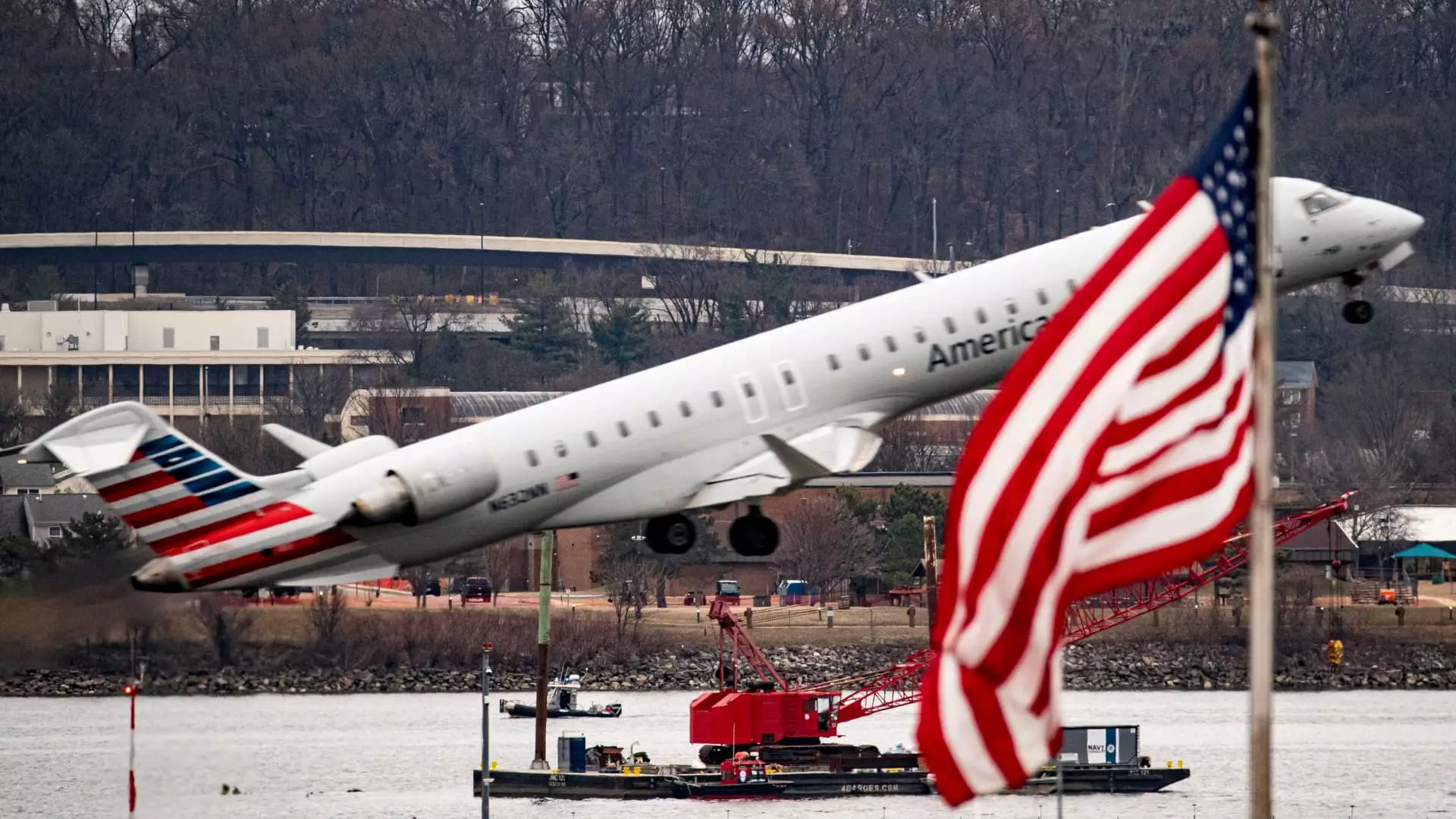In light of a tragic incident involving a military helicopter and a commercial jet, pressing concerns surrounding air traffic management, particularly in Washington, D.C., have resurfaced. U.S. Transportation Secretary Sean Duffy recently indicated the need for reform after discussions with notable figures in technology and transportation, emphasizing the importance of collaboration in creating safer skies. This event not only raises questions about the safety protocols currently in place but highlights the urgent need for modernization in air traffic control systems.
The catastrophic collision between an Army Black Hawk helicopter and an American Airlines regional jet last week, which resulted in the loss of all 67 lives onboard, serves as a chilling reminder of the potential dangers that exist in crowded airspace. This incident stands as the deadliest in the United States since the turn of the century, reigniting debates about the efficacy of existing airspace management protocols. Duffy’s remarks following the tragedy reveal a pivotal moment wherein authority figures are compelled to reassess operational procedures to prioritize public safety.
Duffy’s outreach to Elon Musk, a figure renowned for his unconventional thinking and technological advancements, signifies a strategic move to harness innovative solutions for airspace reform. Musk’s background as the CEO of SpaceX provides a unique perspective on the integration of aerospace technology into existing frameworks. Duffy’s acknowledgment of Musk’s access to top engineering talent underscores the necessity of collaboration with the private sector to modernize and revise outdated systems that govern aerial traffic.
By calling upon influential leaders in the field, Duffy sets a tone focused on proactive change rather than reactive measures, suggesting that a fresh perspective is crucial in navigating the complexities of modern airspace management.
The conversation surrounding the modernization of air traffic control has been ongoing for years, with airline executives calling for increased funding and resources to address the existing shortage of air traffic controllers. Duffy’s references to the single air traffic controller managing both airplane and helicopter traffic during the time of the collision point to a system that is not only strained but potentially perilous. The necessity for additional personnel and updated technologies is clear; without these investments, the risks to public safety will remain exacerbated.
Moreover, Duffy’s comments shed light on the outdated policies within air traffic management that may prioritize military convenience over public safety. His assertion that military personnel, including generals, should opt for ground transportation rather than helicopter flights indicates a cultural shift that may be required in the military approach to air travel.
The coexistence of military training missions and commercial air traffic creates a unique set of challenges that must be managed effectively. Duffy’s remarks regarding the appropriateness of military operations, particularly at night, contribute to a larger discussion on whether current practices prioritize expediency over safety. It accentuates the necessity for robust protocols that ensure the safety of both military and civilian aircraft.
As the National Transportation Safety Board continues its investigation into the recent tragedy, it is imperative that the findings inform policy changes and operational adjustments going forward. The collective findings from this incident could serve as a catalyst for reform, steering discussions toward the development of comprehensive regulations that govern both military and civilian airspace more effectively.
The unfortunate events of last week have uncovered deep-rooted issues within the U.S. airspace management system that require urgent attention. The dialogue initiated by Secretary Duffy reflects a commitment to safety and modernization, but it must be followed up with actionable changes and increased funding to fortify existing structures. Collaborative efforts involving innovative thinkers from the private sector, alongside rigorous investigations into recent accidents, will be essential in paving the way for a safer and more efficient airspace, protecting both military and civilian fliers alike. As the airspace continues to evolve, so must our approaches to its governance, ensuring no tragedy goes unaddressed and unlearned from in the future.


Leave a Reply